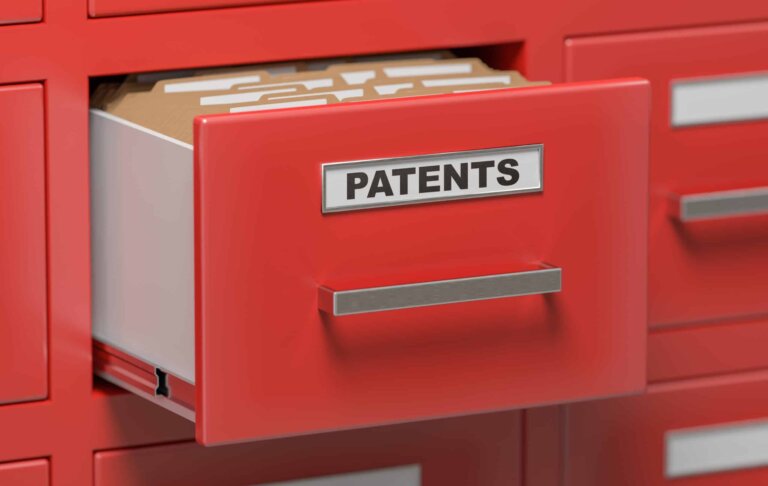Filing for a patent on your invention can be as confusing as it is exciting. There are several different options to choose from, all with unique requirements, advantages, and disadvantages. When it comes to intellectual property law, most inventors new to the patent process want to ensure they obtain the best protection possible.
For most inventions, you’ll need to decide whether to pursue a design or a utility patent application. Getting a legal opinion from a patent attorney is the best way to decide. If you decide on a design patent, then the path is simpler, as there is just one sub-type of patent filing, a design patent application. If utility patent is selected, then you have to make a choice whether to file a provisional or non-provisional patent application first. To this end, one of the most frequent questions we hear regarding provisional vs. non-provisional patent application methods is simply: which is best?
Depending on your circumstances, you may find it beneficial to file for both. Provisional patent applications vs. non-provisional approaches can be tough to compare because their functionalities are starkly different. Nevertheless, once you familiarize yourself with the purpose of each one, your choice might be simpler than you think.
What is a Provisional Patent Application?
A provisional patent application requires no formal patent claim or information disclosure statement regarding prior art. Many people apply for provisional patents to gain the right to use the term “patent pending” in the invention’s description. Upon filing for a provisional patent, an inventor has two options:
- File a corresponding non-provisional patent application. If you have filed a provisional patent, your non-provisional patent application must reference the provisional application that preceded it per 35 U.S.C. §119(e). We highly recommend consulting with a knowledgeable intellectual property attorney to assist you through the patenting process to minimize your chances of denial.
- Convert your provisional patent application to a non-provisional application. Instead of filing a separate non-provisional patent application, inventors may file a petition to convert their provisional patent application under 37 C.F.R. 1.53(c)(3).
This conversion must be requested within one year of the provisional application date and has one potential setback to be aware of. The patent term for converted non-provisional patents will be measured from the original filing date of the provisional patent, not the conversion date.
Key Takeaway: The main purpose of a provisional patent application is to establish a foothold for a later-filed non-provisional patent application. It is not formally investigated and grants you the right to use “patent pending” when describing your invention. You do not have to file a provisional application before filing a non-provisional patent application.
What is a Non-Provisional Patent Application?
One of the most important things to acknowledge when discussing the provisional application vs. non-provisional patent routes is that a patent examiner with the US Patent and Trademark Office will examine non-provisional patent applications. Provisional patent applications are not investigated, which is why they don’t require a formal claim or prior art information disclosure. Non-provisional patents are much more complicated than their provisional counterparts. Among other requirements, they:
- Can be issued into enforceable US patent claims.
- Must contain an invention disclosure statement (which outlines all of the publications and patents known by the inventor and attorney at the time of filing), abstract, the title, a detailed description, drawings or diagrams, and an oath to comply with applicable patent rules.
- Require a larger fee upon filing.
You can access a detailed, complete list of non-provisional patent requirements on the USPTO website.
Key Takeaway: A non-provisional patent application requires you to submit a much more detailed, clearly defined description of your invention. This includes its type (e.g., a method or device), purpose, and design. This application will be formally investigated by a USPTO patent examiner.
Which Route Is Best for Me?
Keep in mind that provisional patent applications essentially operate as a preparatory measure for non-provisional patents. It can be a good idea to file for a preliminary provisional patent if you need time to partner with a manufacturer or work out the details of your patent claim. Once you’ve filed for a provisional patent application, you have 12 months to determine whether your invention is successful or if there is an existing market for it.
Since non-provisional patent applications are pricey and time-consuming, provisional patent applications can act as a placeholder while you work on final preparations before presenting your invention to the USPTO. Both types of patent applications are excellent tools to help inventors obtain the best patent protection possible.
Getting Started—Contact Bold Patents Today
As you can tell, deciding whether to begin with a provisional or a non-provisional patent application is complex! Make sure your first step is the right one by consulting with a knowledgeable intellectual property expert. Bold Patents offers free Discovery Calls for inventors and entrepreneurs interested in securing patent protection.
If you’re debating whether provisional vs. non-provisional patent application methods are suitable for your circumstances, contact us today! We proudly specialize in helping inventors and entrepreneurs maximize their chances of patent application success.

